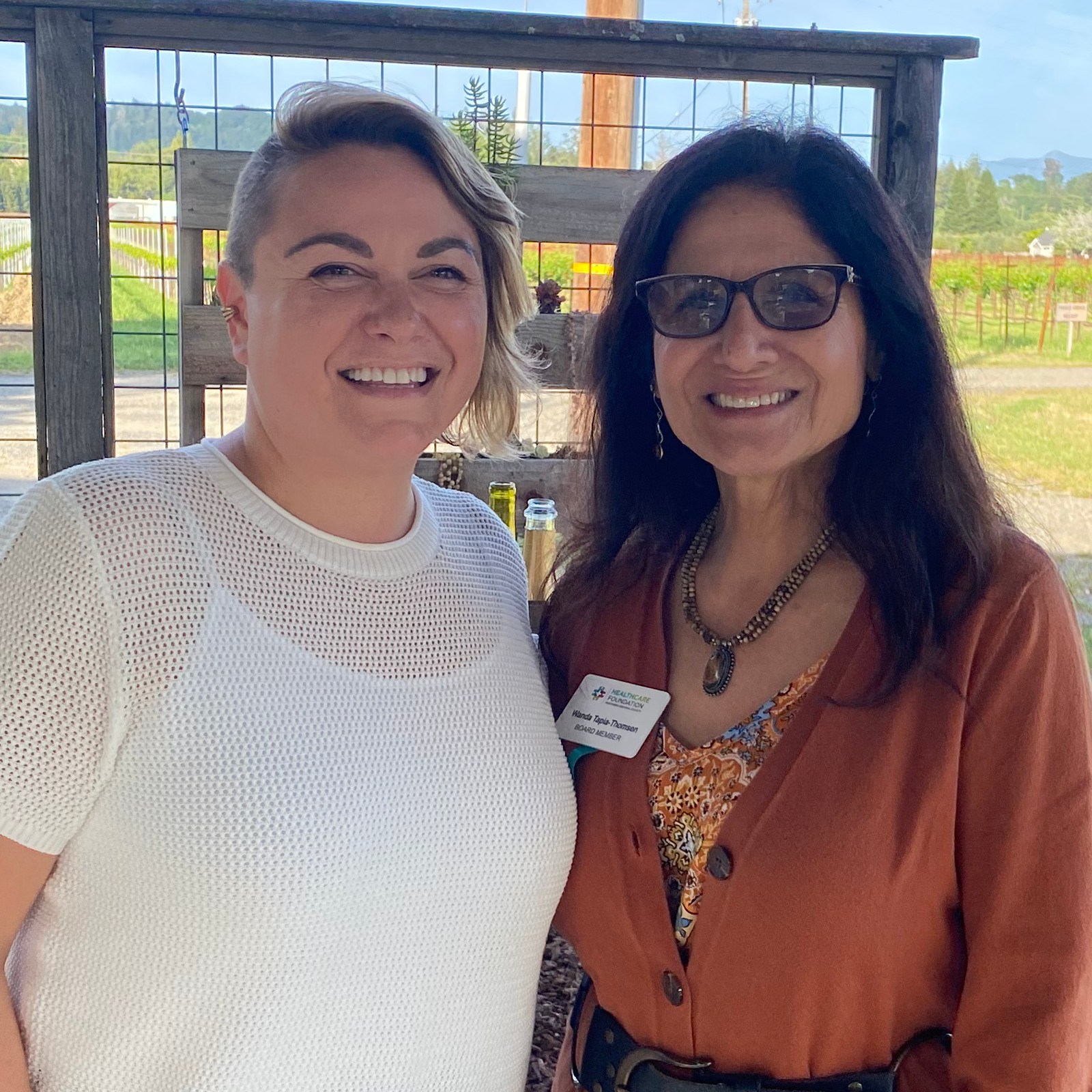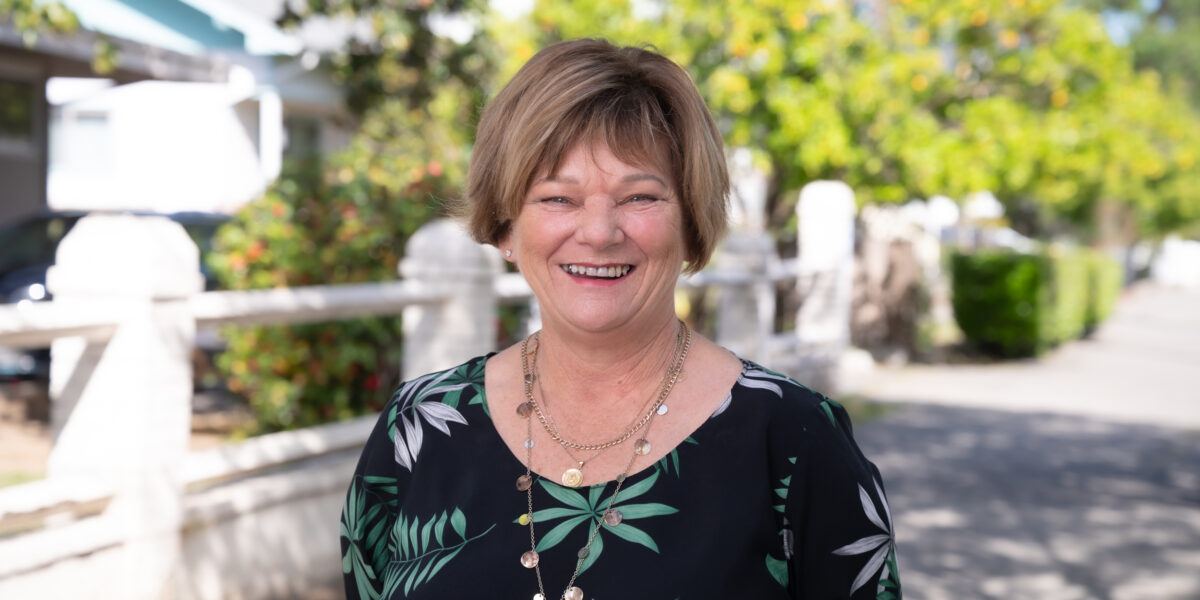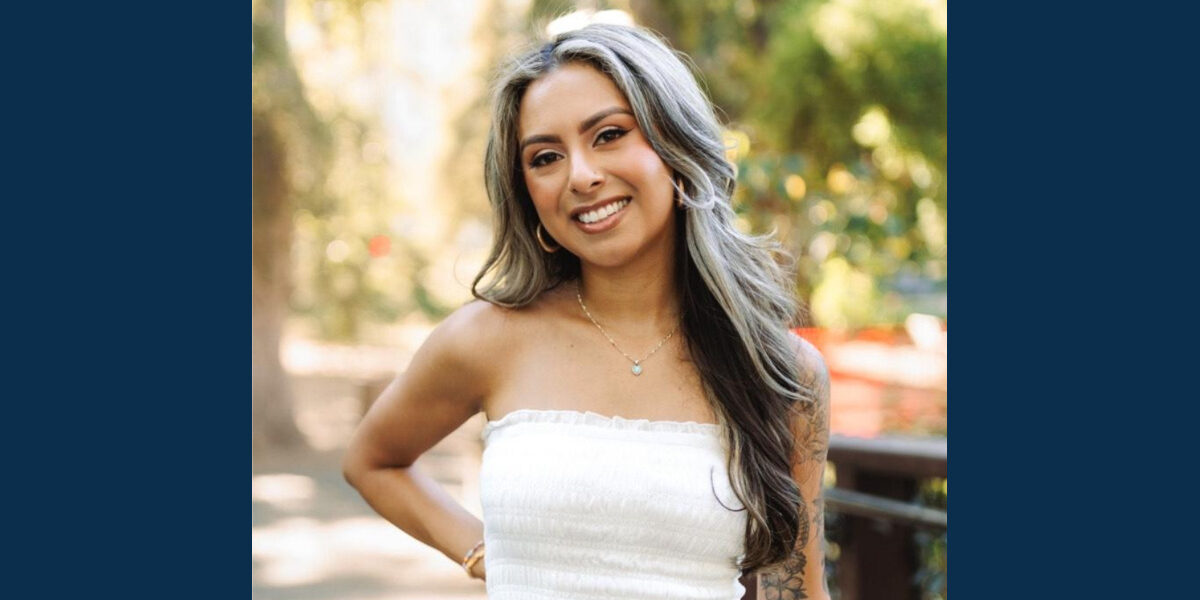

North County in the Lead: A Conversation with Executive Director Amy Ramirez
5 min read. Amy Ramirez reflects on our recent Noche de Amor event, and on her first month as the Healthcare Foundation's Executive Director.
On the heels of June 8’s Noche de Amor community gathering, as well as a lunchtime online meet-and-greet on June 11 to open up further opportunity for community members to ask questions and get to know the Healthcare Foundation’s new executive director, we thought we’d follow-up with Amy to see what kinds of conversations, questions, and insights have been in the mix so far.
Both events come amid many one-on-one meetings Amy is also having with people and organizations across northern Sonoma County.
“Right now, all I’m doing is going around researching and taking in all I can to understand our local organizations,” says Amy, “what they’re doing, what their pain-points are, and where the Healthcare Foundation fits into that work — how we can help build them up.”
The following conversation with Amy, who assumed her duties as executive director at the end of May, took place on June 13.
There was a new approach to the fundraising portion of Noche de Amor this year. How did that go?
Yes, the move from an emphasis on the top charitable contributions to a more community-centered focus was a significant change, and I believe it was enthusiastically embraced. Many at Noche seemed to get the idea right away — because it’s something that they also have been working on, either within their own organizations or in their social circles. There were also some for whom it was a brand new concept. But it was well received all around. Basically, it’s about fostering an inclusive spirit of participation and commitment. As truly grateful as we are for those supporters who can give more, we wanted to acknowledge the significance of the contribution each member of the community makes. It’s a focus on the relationships between us. I believe the stronger and more inclusive those are, the healthier our community is, literally.
I’m very happy to say we had more people than ever before join us in making donations this year. Even if it might be smaller amounts that people donated, the circle of people was wider. It encompasses people who might not have donated in the past, and brings everyone together in a feeling of shared commitment and concern that is invaluable. You could feel it, too. People didn’t drop away after the program but continued to converse and dance together and talk and laugh — people stayed and they celebrated.
Did the evening lend you any further insight into the work ahead?
I thought about how important it is to bring the walls down between us. These walls may be structural, organizational, or just habit. I felt them coming down. There are already strong relationships among the people in our sector and I look forward to building on them, and bringing down unnecessary walls. The feeling is stronger than ever that this is not a competition, but rather that we are all serving the same community.
“Anything we can do to build up organizations’ capacity to start receiving ongoing funding through CalAIM for the work they are doing should be front of mind. It’s a really good step in the direction of keeping our region’s organizations sustainable.”
Amy Ramirez, Executive Director
Did you know many of those who came to the online meet-and-greet?
I knew a good number of them, although some I hadn’t talked to in years, which was really great. It was a very different event from Noche, of course, not least because I couldn’t see anybody on the Zoom call! I was literally talking to my own face, which naturally makes it hard to pick up the vibe — are people understanding what I’m saying? Are people appreciating this? Fortunately, many messages of thanks and support came through the chat, which was very nice and helped me know that people are onboard with what I talked about. And the questions were great! There was a big one about my five-year plan. Obviously that’s still very much in-the-making, but it allowed me to speak about my initial insights as I’ve been going around meeting with people and organizations.
Kim [Bender] has done an amazing job of establishing the Healthcare Foundation as an important player and ally in the community. The fact that so many people signed up for the meet-and-greet and had valuable questions around the strategic plan, utilizing the Community Health Needs Assessment data, supporting Spanish-speaking services and programs — all this made clear to me that people understand the Healthcare Foundation’s role and are excited to see what comes next, what more we can do.
What are some of the initial insights you’ve had as you’ve been meeting separately with people and organizations?
I’ve been reflecting on how necessary these organizations are. How they are no longer the fledgling grassroots organizations they once were but are becoming quite sophisticated, and are highly trusted in the community. They should be getting all the reimbursement that’s due to them through state funding. It has me thinking about the Healthcare Foundation’s role in that. Anything we can do over the next few years to build up these organizations’ capacity to start receiving ongoing funding through CalAIM [California Advancing and Innovating Medi-Cal] for the work they are doing should be front of mind. It’s a really good step in the direction of keeping our region’s organizations sustainable. It’s not easy to do. There’s a lot of work on the backend to become a CalAIM provider, and to get the billing going and the reporting that goes with that. But once it’s up and running, they can start to see revenue coming in for the work that they’re already doing day to day.
In addition to visiting partner organizations and grantees, you’re also getting to know programs the Healthcare Foundation has had a part in launching, such as the ECO Group in Cloverdale. You visited the ECO Group yesterday. What was your impression of that work?

It was eye-opening. The first thing that struck me was how happy people were to be there. The folks that are there participating clearly feel respected and heard and valued because they are continuing to come back. And they have such wonderful things to say about Doctor Danny [Domínguez], about the way the time is used when they come together, and how much they look forward to these groups.
It was also a really good reminder of how far we have to go. There were so many seniors who expressed that they still don’t understand how to use the bus system in Cloverdale, or don’t know how to sign up to take an English class, or are still struggling to schedule medical appointments. In other words, we are still very much on the ground floor as far as access for the Latine community, and especially Latine seniors. I know many of us, including myself, have thought we were making progress in terms of Maslow’s Hierarchy of Needs, but it’s not really the case. Too many people are still struggling to even get from point A to point B.
The ECO Group session’s theme that day was about access to healthcare and about wellness. We did an exercise where we talked about what being healthy means to us; we talked about stress and coping strategies for managing stress; we talked about movement and dance and community, and how those are all elements of health and wellbeing. And the group expressed that they love all of this and want more of it. They want people to come in and show them how to register for an English class or to teach them how to use the bus system. They want to be able to assimilate into Cloverdale and understand what’s happening around them.
Something Kim told me was that, prior to this ECO Group forming, the Senior Center in Cloverdale had never had any Latine people come in despite their long-standing desire and attempts to include them. That has now changed, and that in itself is a huge win. Latine seniors now know the Center is a resource for them and they’re accessing it. And the Center is welcoming them — having a cooking class in Spanish, for instance — breaking down that barrier, and saying, “This is a place for you.” It’s huge.
What’s next on the agenda?
Tomorrow I’ll be taking part in a field trip to Pogo Park in Richmond, which is the highly successful model we drew on for the Community Wellness Center convenings initiative. I have been interested in Pogo Park ever since the Healthcare Foundation applied to Providence for the initial Community Wellness Center grant that helped get it off the ground. Kim presented Pogo Park, and I did some research into it as I was reviewing the grant application. It is such a fantastic model. From its very beginning until now they have lived by the philosophy and approach of building something that is designed by the community, for the community. I’m very excited to be there in person and see it for myself. I expect it will be an inspiring touchstone as we move forward with these wellness centers.
Honestly, I feel that, while it’s Oakland and San Francisco leading the way with such community-centered and community-driven solutions, northern Sonoma County is right behind them. I think that’s to Kim’s credit. She has taken those principles and applied them to Sonoma County. Between her and Doctor Danny, who also is very rooted in Oakland and San Francisco–based work, we here in north county are truly at the forefront of realizing these forward-thinking projects and solutions for our own communities. The rest of Sonoma County needs to pay attention!

Related News + Stories
Invest in Our Community
Your support is vital to our collective vision of eliminating health inequities in northern Sonoma County.
Donate



